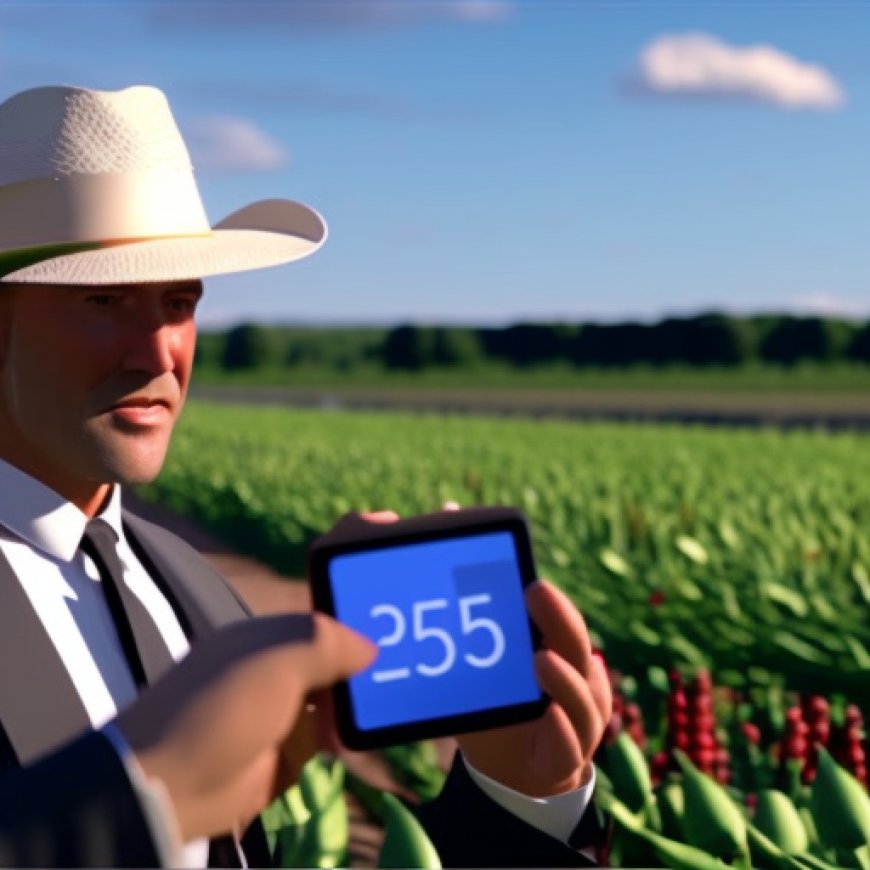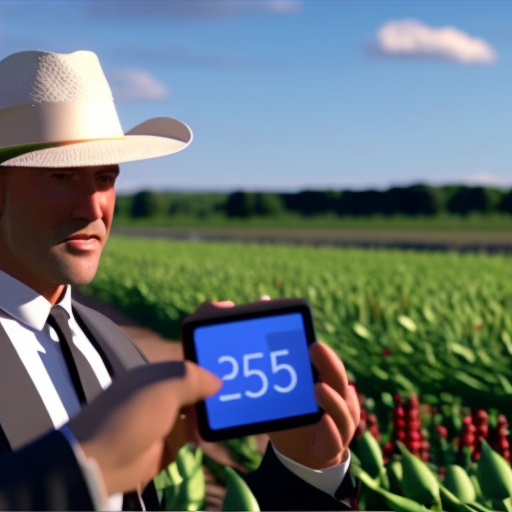Financial assistance application process opens for USDA farm loan borrowers
Financial assistance application process opens for USDA farm loan ... Kennebec Journal and Morning Sentinel


The U.S. Department of Agriculture Opens Financial Assistance Application Process for Farmers, Ranchers, and Forest Landowners
The U.S. Department of Agriculture (USDA) has announced the opening of the financial assistance application process for eligible farmers, ranchers, and forest landowners who have experienced discrimination in USDA farm lending programs prior to January 2021. This initiative is in accordance with Section 22007 of the Inflation Reduction Act (IRA), which directs USDA to provide this assistance. The USDA has worked diligently to design the program with significant stakeholder input.
Application Process and Eligibility
Farmers, ranchers, and forest landowners who have experienced discrimination by USDA in its farm loan programs prior to January 1, 2021, and/or are currently debtors with assigned or assumed USDA farm loan debt that was the subject of USDA discrimination prior to January 1, 2021, are eligible for this program. The application process is open from July 7 to October 31. Applicants can choose to apply via the e-filing portal at 22007apply.gov or submit paper-based forms via mail or in-person delivery to the program’s local offices. It is important to note that the application process is not on a first-come, first-served basis. All applications received or postmarked before the October 31 deadline will be considered.
Support and Outreach
To support producers throughout the application process, USDA has partnered with organizations that have extensive experience conducting outreach to farm organizations. These groups include AgrAbility, Farmer Veteran Coalition, Farmers’ Legal Action Group, Federation of Southern Cooperatives, Intertribal Agriculture Council, Land Loss Prevention Program, National Young Farmers Coalition, and Rural Coalition. Additionally, vendors operating four regional hubs are providing technical assistance and working closely with community-based organizations to conduct outreach using digital and grassroots strategies.
Program Oversight
Vendors operating four regional hubs are also providing technical assistance and working closely with these and other community-based organizations to conduct outreach using digital and grassroots strategies, to ensure potential applicants are informed about the program and have the opportunity to apply. These hubs are operating a network of brick-and-mortar program offices and will conduct extensive outreach about the program. Windsor Group serves farmers in the eastern regions of the U.S. and Analytic Acquisitions serves the western regions. A national administrator, Midtown Group, is responsible for program oversight and integrity, and will lead a national call-center, operate the application website — 22007apply.gov, which is now open – and review and process applications and payments. All vendors have experience in professional services, supporting government contracts, and complex program operations. On March 1, 2023, USDA shared initial details on how the Section 22007 program will work, including that the Inflation Reduction Act specifies the Secretary of Agriculture is responsible for providing this assistance through qualified nongovernmental entities, under standards set by USDA. USDA entered into agreements with vendors and cooperators in May.
Other Programs
In addition to the Discrimination Financial Assistance Program (DFAP) opening, the Inflation Reduction Act has created several other programs that are helping USDA rebuild trust, address systemic issues, and improve service to people who may have been underserved by USDA in the past. More information about USDA’s equity agenda and progress is available at usda.gov/equity.
Protection Against Scams
USDA has become aware of lawyers and groups spreading misleading information about the discrimination assistance process, pressuring people to sign retainer agreements, and asking for private and sensitive information. It is important to note that the official application process is free and no attorneys’ fees will be paid to applicants or their counsel by USDA or any other agency or department of the United States. Applicants are not required to retain an attorney. USDA, the national administrator, and the regional hub vendors will neither recommend nor discourage applicants from obtaining counsel or using a specific attorney or law firm. For more information on how to protect against possible scams, refer to the program’s fact sheet about the program timeline and ways to avoid scams at farmers.gov.
SDGs, Targets, and Indicators Analysis
1. Which SDGs are addressed or connected to the issues highlighted in the article?
- SDG 1: No Poverty
- SDG 5: Gender Equality
- SDG 10: Reduced Inequalities
- SDG 16: Peace, Justice, and Strong Institutions
The article discusses the opening of a financial assistance application process for farmers, ranchers, and forest landowners who experienced discrimination in USDA farm lending programs. This issue is connected to SDG 1 (No Poverty) as it aims to provide financial assistance to those who faced discrimination and may be in need of support. It is also connected to SDG 5 (Gender Equality) and SDG 10 (Reduced Inequalities) as it addresses the issue of discrimination and aims to provide equal opportunities for farmers, regardless of their gender or background. Additionally, it is connected to SDG 16 (Peace, Justice, and Strong Institutions) as it seeks to address systemic issues and improve service to those who may have been underserved by USDA in the past.
2. What specific targets under those SDGs can be identified based on the article’s content?
- Target 1.4: By 2030, ensure that all men and women, in particular the poor and the vulnerable, have equal rights to economic resources, as well as access to basic services, ownership, and control over land and other forms of property.
- Target 5.a: Undertake reforms to give women equal rights to economic resources, as well as access to ownership and control over land and other forms of property.
- Target 10.2: By 2030, empower and promote the social, economic, and political inclusion of all, irrespective of age, sex, disability, race, ethnicity, origin, religion, or economic or other status.
- Target 16.3: Promote the rule of law at the national and international levels and ensure equal access to justice for all.
Based on the article’s content, the specific targets identified are related to ensuring equal rights and access to economic resources, including land and property, for both men and women (Target 1.4 and Target 5.a). The article also highlights the importance of promoting social, economic, and political inclusion for all individuals, regardless of their background (Target 10.2). Additionally, it emphasizes the need to address systemic issues and promote equal access to justice (Target 16.3).
3. Are there any indicators mentioned or implied in the article that can be used to measure progress towards the identified targets?
- Indicator 1.4.2: Proportion of total adult population with secure tenure rights to land, with legally recognized documentation and who perceive their rights to land as secure, by sex and by type of tenure.
- Indicator 5.a.1: (a) Proportion of total agricultural population with ownership or secure rights over agricultural land, by sex; and (b) share of women among owners or rights-bearers of agricultural land, by type of tenure.
- Indicator 10.2.1: Proportion of people living below 50 percent of median income, by age, sex, and persons with disabilities.
- Indicator 16.3.3: Proportion of victims of violence in the previous 12 months who reported their victimization to competent authorities or other officially recognized mechanisms.
The article does not explicitly mention indicators, but based on the identified targets, the following indicators can be used to measure progress:
– Indicator 1.4.2 can be used to measure progress towards ensuring secure tenure rights to land for both men and women.
– Indicator 5.a.1 can be used to measure progress towards achieving equal ownership or secure rights over agricultural land for both men and women.
– Indicator 10.2.1 can be used to measure progress towards reducing poverty and inequality by measuring the proportion of people living below a certain income threshold.
– Indicator 16.3.3 can be used to measure progress towards promoting access to justice by measuring the proportion of victims of violence who report their victimization to competent authorities.
4. Table: SDGs, Targets, and Indicators
| SDGs | Targets | Indicators |
|---|---|---|
| SDG 1: No Poverty | Target 1.4: By 2030, ensure that all men and women, in particular the poor and the vulnerable, have equal rights to economic resources, as well as access to basic services, ownership, and control over land and other forms of property. | Indicator 1.4.2: Proportion of total adult population with secure tenure rights to land, with legally recognized documentation and who perceive their rights to land as secure, by sex and by type of tenure. |
| SDG 5: Gender Equality | Target 5.a: Undertake reforms to give women equal rights to economic resources, as well as access to ownership and control over land and other forms of property. | Indicator 5.a.1: (a) Proportion of total agricultural population with ownership or secure rights over agricultural land, by sex; and (b) share of women among owners or rights-bearers of agricultural land, by type of tenure. |
| SDG 10: Reduced Inequalities | Target 10.2: By 2030, empower and promote the social, economic, and political inclusion of all, irrespective of age, sex, disability, race, ethnicity, origin, religion, or economic or other status. | Indicator 10.2.1: Proportion of people living below 50 percent of median income, by age, sex, and persons with disabilities. |
| SDG 16: Peace, Justice, and Strong Institutions | Target 16.3: Promote the rule of law at the national and international levels and ensure equal access to justice for all. | Indicator 16.3.3: Proportion of victims of violence in the previous 12 months who reported their victimization to competent authorities or other officially recognized mechanisms. |
Behold! This splendid article springs forth from the wellspring of knowledge, shaped by a wondrous proprietary AI technology that delved into a vast ocean of data, illuminating the path towards the Sustainable Development Goals. Remember that all rights are reserved by SDG Investors LLC, empowering us to champion progress together.
Source: centralmaine.com

Join us, as fellow seekers of change, on a transformative journey at https://sdgtalks.ai/welcome, where you can become a member and actively contribute to shaping a brighter future.







